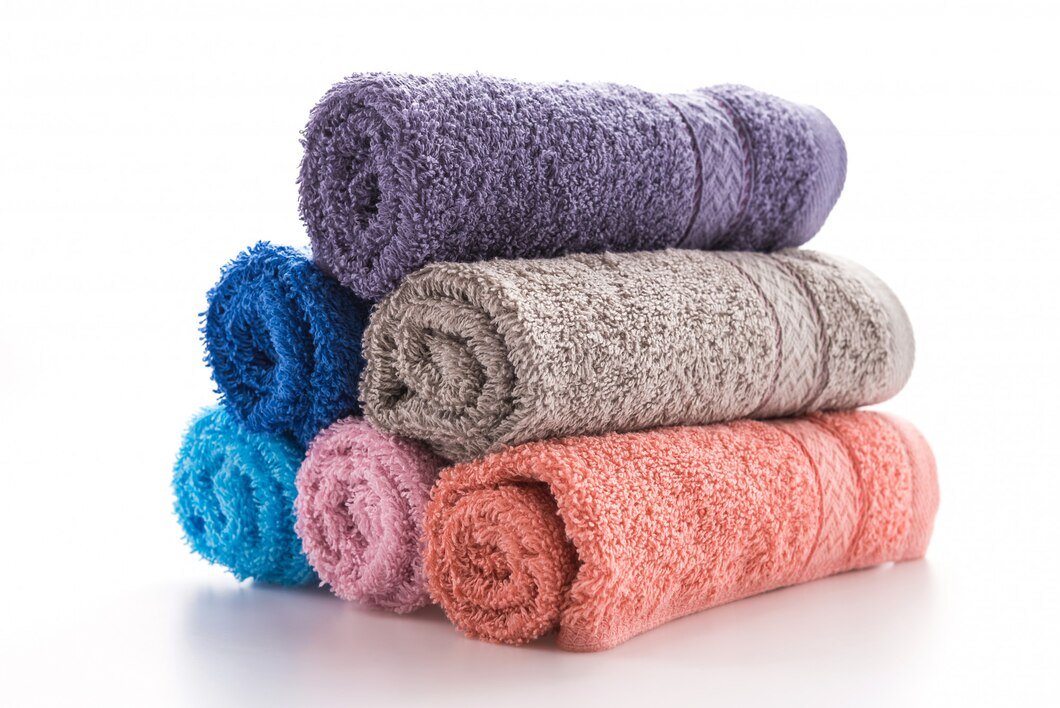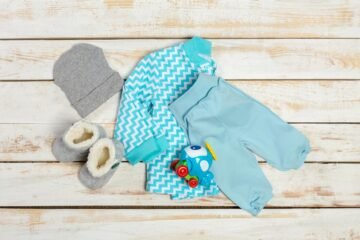Introduction
Terry cloth, a versatile and highly absorbent fabric, has been a staple in homes and fashion for decades. From luxurious bathrobes to practical towels and stylish beachwear, terry cloth offers a blend of comfort and functionality that makes it indispensable. In this comprehensive guide, we’ll explore everything you need to know about terry cloth, its uses, benefits, and why it should be a staple in your wardrobe and home.
What is Terry Cloth?
Terry cloth is a type of fabric known for its looped pile on both sides, which gives it a unique texture and excellent absorbency. The loops in terry cloth are created during the weaving process, where extra yarn is added to create the soft, plush surface. This texture is not just for comfort—it plays a critical role in the fabric’s ability to absorb water, making terry cloth ideal for towels, bathrobes, and other items that need to soak up moisture.
History of Terry Cloth
The origins of terry cloth can be traced back to the 19th century, where it was first produced in France. The name “terry” comes from the French word “tirer,” which means to pull out, referring to the process of pulling out the loops during weaving. Initially, terry cloth was used primarily for towels and other bath-related products. Over time, its use expanded to include a wide range of products, from casual wear to high-end fashion items.
Types of Terry Cloth
There are several types of terry cloth, each suited to different applications. The most common types include:
- 100% Cotton Terry Cloth: Made entirely of cotton, this is the most popular type due to its softness, absorbency, and durability. It is commonly used for towels, bathrobes, and baby products.
- Blended Terry Cloth: This type combines cotton with synthetic fibers such as polyester to enhance durability and reduce shrinkage. While not as absorbent as pure cotton, blended terry cloth is often used for athletic wear and accessories.
- French Terry Cloth: Unlike traditional terry cloth, French terry has loops only on one side, giving it a smoother texture. This makes it ideal for clothing such as sweatshirts and joggers, offering comfort and a sleek appearance.
- Microfiber Terry Cloth: Made from fine synthetic fibers, microfiber terry cloth is known for its lightweight feel and exceptional absorbency. It is often used for cleaning cloths and sports towels.
Uses of Terry Cloth
Terry cloth is incredibly versatile, with a wide range of uses that span from household items to fashion:
- Towels and Bathrobes: Terry cloth’s absorbency makes it perfect for bath towels, hand towels, and bathrobes. The soft loops trap water, making drying off quick and comfortable.
- Beachwear: Terry cloth is a popular choice for beachwear, including cover-ups and shorts. Its ability to absorb water and dry quickly makes it ideal for use around water.
- Baby Products: Terry cloth is often used in baby towels and washcloths because of its softness and gentle texture, which is perfect for sensitive skin.
- Athletic Wear: The moisture-wicking properties of terry cloth make it a great material for sweatbands, headbands, and other athletic accessories.
- Home Textiles: Beyond towels, terry cloth is also used in kitchen cloths, bath mats, and even upholstery, where absorbency and comfort are desired.
Benefits of Terry Cloth
There are many reasons why terry cloth remains a popular choice for a variety of products:
- High Absorbency: The looped fibers of terry cloth allow it to absorb a significant amount of water, making it ideal for towels, robes, and similar products.
- Durability: Terry cloth is robust and long-lasting, able to withstand frequent washing and heavy use without losing its shape or softness.
- Comfort: The plush texture of terry cloth provides a soft, comforting feel against the skin, making it a popular choice for garments and accessories that are worn close to the body.
- Versatility: With a range of weights and types, terry cloth can be used in a multitude of applications, from casual wear to luxury bath linens.
- Breathability: Despite its thick texture, terry cloth is breathable, making it comfortable to wear even in warmer climates.
How to Care for Terry Cloth
Proper care is essential to maintain the quality and longevity of terry cloth items. Here are some tips for taking care of your terry cloth products:
- Washing: Wash terry cloth items in warm water with a gentle detergent. Avoid using fabric softeners, as they can coat the loops and reduce absorbency.
- Drying: Tumble dry on low heat to prevent shrinkage. Over-drying can damage the fibers, so it’s best to remove items while they are slightly damp.
- Avoid Bleach: Bleach can weaken the fibers of terry cloth and cause discoloration. Instead, opt for oxygen-based bleach if you need to remove stains.
- Storage: Store terry cloth items in a cool, dry place to prevent mildew and maintain freshness.
Terry Cloth in Fashion
In recent years, terry cloth has made a resurgence in fashion, particularly in loungewear and athleisure. Designers are now incorporating terry cloth into a range of clothing items, from comfortable shorts and joggers to chic dresses and tops. The fabric’s unique texture adds an element of luxury and comfort, making it a popular choice for those looking to blend style with practicality.
Eco-Friendly Terry Cloth
With increasing awareness of environmental impact, there has been a shift towards more sustainable textiles, and terry cloth is no exception. Organic cotton terry cloth is becoming more popular, offering the same benefits of traditional terry cloth with the added advantage of being eco-friendly. This sustainable option is grown without harmful chemicals and uses less water, making it a great choice for the environmentally conscious consumer.
How to Choose the Right Terry Cloth Product
When selecting terry cloth products, consider the following factors to ensure you choose the right one for your needs:
- Purpose: Determine what you need the terry cloth for—whether it’s for towels, clothing, or home use—and choose the type accordingly.
- Material: Check if the terry cloth is 100% cotton or a blend, depending on your preference for softness and durability.
- Weight: Heavier terry cloth is more absorbent and plush, while lighter terry cloth is more suitable for apparel and travel-friendly towels.
- Quality: Look for high-quality terry cloth with dense loops and a smooth finish. This indicates better absorbency and longer-lasting performance.
FAQs about Terry Cloth
Q: What is the difference between terry cloth and microfiber?
A: Terry cloth is typically made from cotton with a looped texture that enhances absorbency, while microfiber is made from synthetic fibers and is known for being lightweight and highly absorbent. Microfiber is often used for cleaning purposes, whereas terry cloth is more commonly used for towels, bathrobes, and clothing.
Q: Can terry cloth be used for baby clothes?
A: Yes, terry cloth is an excellent choice for baby clothes and accessories due to its softness, absorbency, and gentle texture, making it suitable for sensitive baby skin.
Q: How do I prevent my terry cloth towels from losing their softness?
A: To maintain the softness of terry cloth towels, avoid using fabric softeners and harsh detergents, wash in warm water, and tumble dry on low heat. Removing the towels while slightly damp can also help preserve their plush feel.
Q: Is terry cloth good for the environment?
A: Terry cloth made from organic cotton is more environmentally friendly than traditional cotton terry cloth, as it is grown without harmful chemicals and uses less water. Opting for organic terry cloth can be a more sustainable choice.
Q: How does terry cloth compare to other fabrics for bathrobes?
A: Terry cloth is one of the best fabrics for bathrobes due to its high absorbency and plush texture, which provides comfort and warmth. Other fabrics, like satin or silk, may offer a different feel and are less absorbent, making terry cloth a better choice for post-shower wear.
Conclusion
Terry cloth is a timeless fabric that has stood the test of time due to its exceptional absorbency, comfort, and versatility. Whether you’re looking for luxurious bath towels, cozy bathrobes, or fashionable loungewear, terry cloth is a reliable choice that combines practicality with style. By understanding the different types of terry cloth and their uses, you can make informed decisions when choosing the best products for your needs. Embrace the comfort and functionality of terry cloth, and enjoy the benefits of this remarkable fabric in your daily life.
you can see latest updates on: Allen wrench



